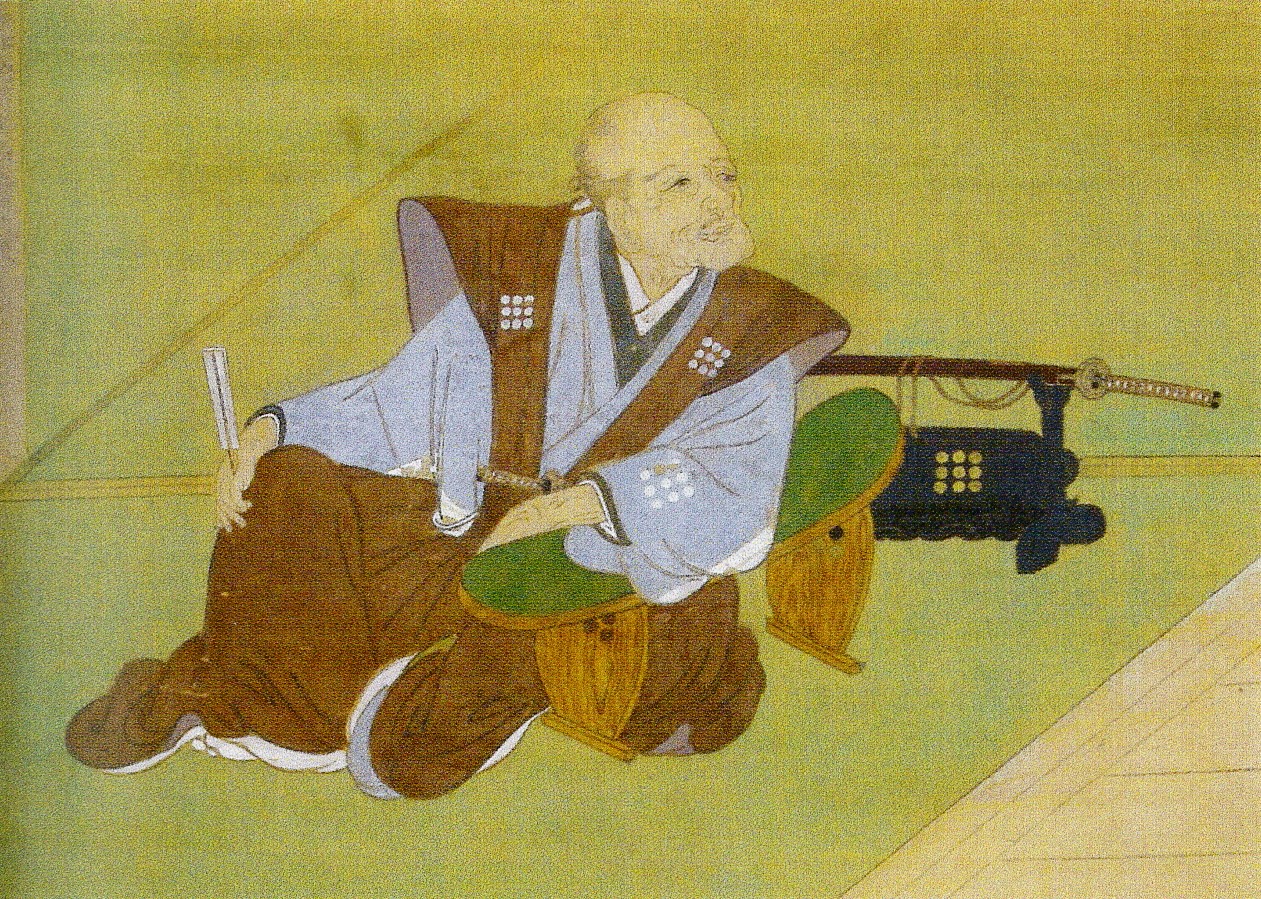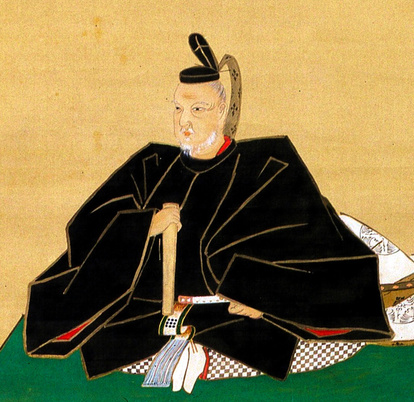|
Hoshina Masakata
Hoshina (written: ) is a Japanese surname. Notable people with the surname include: *, Japanese ''daimyé'' *, Japanese ''daimyé'' *, Japanese ''daimyé'' *, Japanese ''daimyé'' *, Japanese ''daimyé'' *, Japanese samurai *, Japanese ''daimyé'' *, Japanese ''daimyé'' *, Filipino-Japanese judoka Fictional characters *, a character in the manga series ''Shugo Chara!'' *Hikaru Hoshina See also *, a Japanese clan {{surname Japanese-language surnames ... [...More Info...] [...Related Items...] OR: [Wikipedia] [Google] [Baidu] |
Hoshina Masaari
Viscount (March 22, 1833 ã January 23, 1888) was a Japanese ''daimyé'' of the late Edo period who was the last ruler of the Iino Domain (Kazusa Province; 20,000 ''koku''). Though lord of a minor domain, his family was a branch of the Matsudaira of Aizu, whose founder Hoshina Masayuki was the older brother of the Iino founder, Hoshina Masasada. Masaari was born in Edo to the 9th Iino lord, Hoshina Masamoto. Masaari was the younger brother of Matsudaira Teru. As he was initially weak, his father did not notify the shogunate of his birth. However, as Masamoto's first and second sons died in quick succession, he notified the shogunate of Masaari's birth in 1836; this is why Masaari's birthdate is given in some sources as 1836. He was made heir in 1847, and succeeded to family headship after his father's death in 1848. He received his family's hereditary title of ''Danjé no ché¨'' in 1850. In 1853, Masaari led Iino troops and took part in the defense of Uraga, Kanagawa, Uraga upon ... [...More Info...] [...Related Items...] OR: [Wikipedia] [Google] [Baidu] |
Hoshina Masakage
(October 15, 1616 ã July 2, 1700) was a Japanese ''daimyé'' of the Edo period, who ruled the Iino Domain. His court title was ''Danjé no ché¨''. He was the son of Hoshina Masasada, but was dispossessed of family headship due to his father's adoption of an outside heir. However, after his father's death, Masakage was reinstated, and inherited rulership of the Iino domain. He held a variety of low to mid-level posts in the Tokugawa shogunate, including that of ''Nikké Sairei-bugyé'', connected with the shrine of Tokugawa Ieyasu at Nikké is a city located in Tochigi Prefecture, Japan. , the city had an estimated population of 80,239 in 36,531 households, and a population density of 55 persons per km2. The total area of the city is . It is a popular destination for Japanese and .... ReferencesEdo 300 HTML(26 November 2007) 1616 births 1700 deaths Daimyo Hoshina clan {{Daimyo-stub ... [...More Info...] [...Related Items...] OR: [Wikipedia] [Google] [Baidu] |
Hoshina Masamitsu
was a Japanese ''daimyé'' of the Edo period, who served the Tokugawa clan. Masamitsu was the son of Hoshina Masanao, and after having lent his support to Tokugawa Ieyasu at the 1600 Battle of Sekigahara, he was given the Takaté fief in 1600. With his father's death the following year in Takaté, Masamitsu became the new head of the Hoshina clan and served throughout the Osaka Campaigns of 1614 and 1615. Masamitsu was later privileged with the adoption of Tokugawa Hidetada's fourth son Komatsu, the future Hoshina Masayuki. His childhood name was Jinshiro (ÓÍÕ). Family * Father: Hoshina Masanao * Mother: Atobeshi-dono * Wife: daughter of Sanada Masayuki was a Japanese Sengoku period lord and ''daimyé''. He was the head of Sanada clan,_a_regional_house_of_Shinano_Province.html" ;"title="DF 56 of 80/nowiki>">DF 56 of 80">("S ..., a regional house of Shinano Province">DF 56 of 80/nowiki>">DF 56 ... * Adopted Sons: ** Hoshina Masasada ** Hoshina Masashige ** Hoshina ... [...More Info...] [...Related Items...] OR: [Wikipedia] [Google] [Baidu] |
Hoshina Masanao
(1542 ã October 21, 1601) was a Japanese ''daimyé'' of the Sengoku period, who served the Takeda clan. He was the successor of his father Hoshina Masatoshi in the ranks of the senior Takeda retainers, and was given command of 250 cavalry.ð¢ÓÏÌÙÈð¢Ðð¢ÓÏÌÙÈÓÇ Masanao was driven out of Takaté Castle following a , but was soon allowed to return through the assistance of the Hojo clan. Following a brief conflict with 's forces, Masanao became a Tokugawa retainer, and was allowed to ... [...More Info...] [...Related Items...] OR: [Wikipedia] [Google] [Baidu] |
Hoshina Masasada
(June 14, 1588 ã December 22, 1661) was a Japanese ''daimyé'' of the Edo period, who ruled the Iino Domain. He was first a senior hatamoto with a 3000 ''koku'' income, before he was made lord of Iino Domain, Iino. References 1588 births 1661 deaths Daimyo Hatamoto Hoshina clan {{daimyo-stub ... [...More Info...] [...Related Items...] OR: [Wikipedia] [Google] [Baidu] |
Hoshina Masatoshi
(1509ã1593) was a Japanese samurai of the Sengoku period, who served the Takeda clan. He was the head of Hoshina clan, son of Hoshina Masanori. Masatoshi served under Shingen from the latter's earliest campaigns and fought in many of battles. He initially opposed Takeda Shingen's invasion of Shinano; however, he later submitted to Shingen and became a Takeda general, in command of 120 cavalry. Together with Sanada Yukitaka and Késaka Masanobu, he was one of the three "Danjo" (Danjé stands for a formal title, Danjéché¨; Í¥ƒÌÙÈÍ¢ ) in the Takeda clan, distinguished from the others as ''"Yari Danjé"'' (ÌÏÍ¥ƒÌÙÈ), due to his skilled use of the spear. Masatoshi was succeeded by his son Hoshina Masanao. Family * Father: Hoshina Masanori * Sons: ** Hoshina Masanao (1542 ã October 21, 1601) was a Japanese ''daimyé'' of the Sengoku period, who served the Takeda clan. He was the successor of his father Hoshina Masatoshi in the ranks of the senior Takeda retainers, and was ... [...More Info...] [...Related Items...] OR: [Wikipedia] [Google] [Baidu] |
Hoshina Masatsune
was the 2nd ''daimyé'' of Aizu Domain in Mutsu Province, Japan (modern-day Fukushima Prefecture). His courtesy title was '' Chikuzen-no-kami'' and ''Jijé¨'', and his Court rank was Senior Fourth Rank, Lower Grade. Biography Masatsune was the fourth son of Hoshina Masayuki and became ''daimyé'' in 1669 on the retirement of his father. He understood the construction of his father's monumental grave at Hanitsu Jinja in Inawashiro in 1675. He is also known for reviving the Oyaku-en, a medicinal herbs garden which had been established by the Ashina clan during their tenure over Aizu. However, his tenure was a constant struggle against the machinations of his mother, Shoko-in (1620-1691), who wielded a strong influence and promoted less-than-qualfied relatives to various high posts, including that of ''karé''. He was married to a daughter of Maeda Toshitsune of Kaga Domain, but had only one daughter. He adopted his younger brother, Matsudaira Masakata as his heir and died in 168 ... [...More Info...] [...Related Items...] OR: [Wikipedia] [Google] [Baidu] |
Hoshina Masayuki
was a Japanese ''daimyé'' of the early Edo period, who was the founder of what became the Matsudaira house of Aizu. He was an important figure in the politics and philosophy of the early Tokugawa shogunate. Biography Hoshina Masayuki was born in Edo, the illegitimate 4th son of the 2nd shégun, Tokugawa Hidetada. As Masayuki's mother, Oshizu no Kata (1584ã1635, later called Jéké-in) was a servant, Hidetada chose to hide the newborn, then named Komatsu (Í¿¡Ìƒ). This was to protect him from potential infanticide at the hands of Oeyo, Hidetada's wife. Komatsu was later secretly given in adoption to Hoshina Masamitsu, a former Takeda retainer and ''daimyé'' of Takaté Domain. In 1629, Komatsu first met his elder brother, the third Shégun Tokugawa Iemitsu, father, the retired-Shégun (Tokugawa Hidetada) and another older brother, Tokugawa Tadanaga, and was given some mementos of his grandfather, Tokugawa Ieyasu as recognition of his status as a member of the Tokugawa lineag ... [...More Info...] [...Related Items...] OR: [Wikipedia] [Google] [Baidu] |
Tomohiko Hoshina
is a judoka who represented the Philippines at the World Judo Championships, the Southeast Asian Games, and the Olympic Games. He was born in Japan to a Japanese father and Filipina mother. Early life Hoshina was born and raised in Shizuoka, Japan to a Filipina mother and Japanese father. He started competing in judo before the age of 10 - his father is a judo fanatic and encouraged him to enter tournaments. He continued competing in judo while at college and he hopes eventually to become a sumo wrestling teacher. Career 2012 Summer Olympics In 2012 Summer Olympics in London, Hoshina debuted in the Men's +100 kg in judo,Ted S. Melendres (201Hoshina heavy underdog against South Korean vet Philippine Daily Inquirer Retrieved August 2nd, 2012 representing the Philippines.Filipino Olympian: Tom ... [...More Info...] [...Related Items...] OR: [Wikipedia] [Google] [Baidu] |
List Of Shugo Chara! Characters
''Shugo Chara!'' is a Japanese shéjo manga created by the manga author duo Peach-Pit. The story centers on elementary schoolgirl Amu Hinamori, whose popular exterior, referred to as "cool and spicy" by her classmates, contrasts with her introverted personality. When Amu wishes for the courage to be reborn as her would-be self, she is surprised to find three colorful eggs the next morning, which hatch into three Guardian Characters: Ran, Miki, and Su. Peach-Pit uses Amu to explore differences between one's true self and the self that is presented to others. Like Jun Sakurada in Peach-Pit's previous work, ''Rozen Maiden'', Amu tackles issues such as alienation and fitting in at school. Unlike most heroines in other magical girl series, Amu is neither the perfect sweetheart nor a complete klutz. Amu gets grumpy and frequently talks back to others in contrast to the polite schoolgirls that fill the genre. Amu's Guardian CharactersãRan, Miki, Su, and later Diamondãaid her i ... [...More Info...] [...Related Items...] OR: [Wikipedia] [Google] [Baidu] |
Hoshina Clan
The is a Japanese clan which claims descent from Emperor Seiwa, and is a branch of the Minamoto clan. They were famous for their role as retainers of the Takeda clan in the 16th century. In the Edo period, the clan produced two ''daimyé'' families: one ruling the Aizu domain, the other one ruling the Iino Domain. The Aizu-Matsudaira were descended from Hoshina Masayuki, a son of Tokugawa Hidetada, adopted by Hoshina Masamitsu. Matsudaira Katamori and Hoshina Masaari, two prominent figures of the Bakumatsu period, were members of the Hoshina clan. Family head # Hoshina Tadanaga # Hoshina Naganao # Hoshina Nagatoki # Hoshina Mitsutoshi # Hoshina Masatomo # Hoshina Masatoshi # Hoshina Masanori # Hoshina Masatoshi # Hoshina Masanao # Hoshina Masamitsu was a Japanese ''daimyé'' of the Edo period, who served the Tokugawa clan. Masamitsu was the son of Hoshina Masanao, and after having lent his support to Tokugawa Ieyasu at the 1600 Battle of Sekigahara, he was given the Takaté ... [...More Info...] [...Related Items...] OR: [Wikipedia] [Google] [Baidu] |


